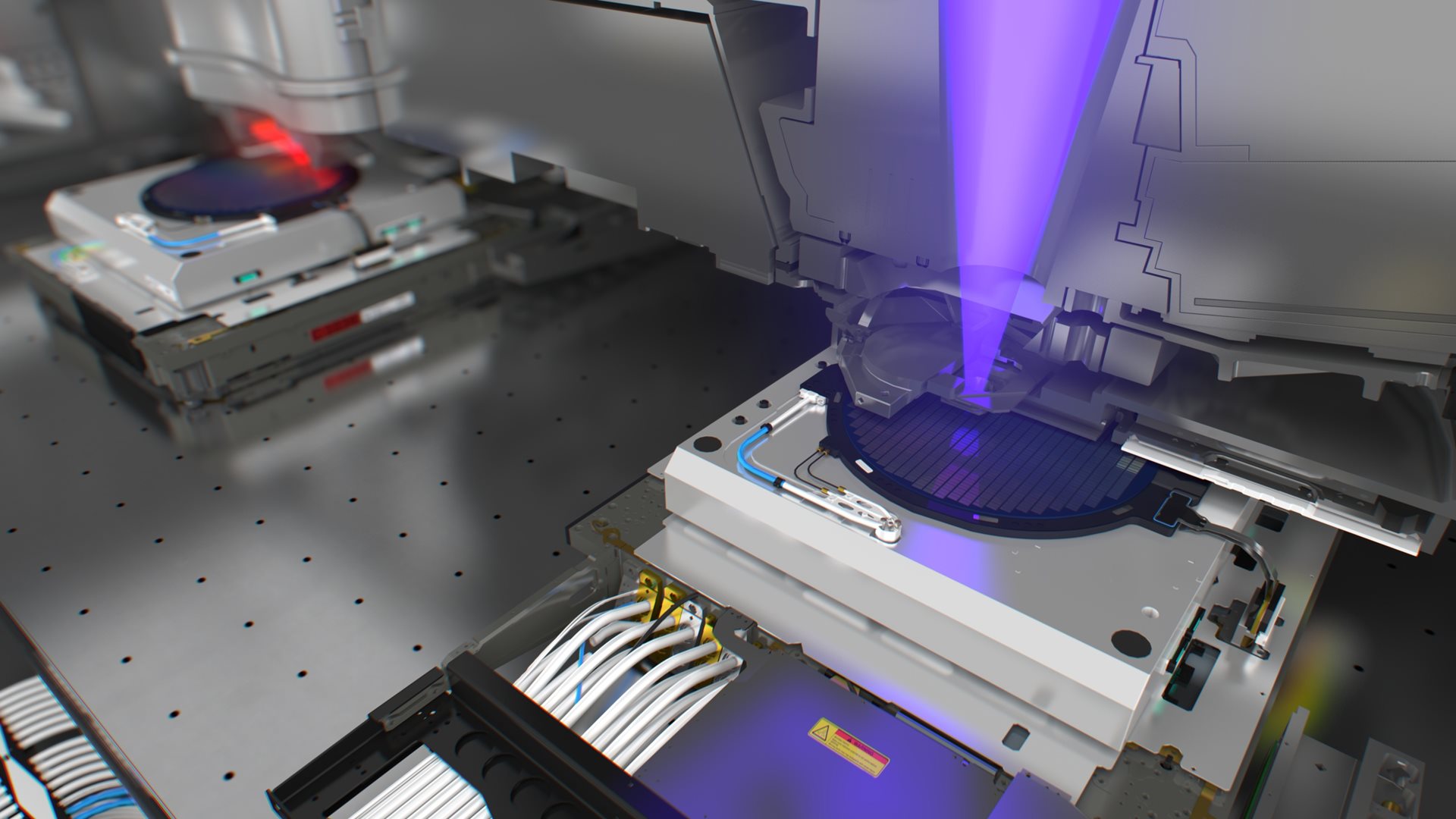Press release - SEMICON JAPAN, Tokyo, Japan, December 1, 2004
ASML Holding NV (ASML) today announced that its immersion lithography program spans the globe with ‘wet’ lithography systems on three continents and both coasts of the United States. This comes just one year after the company announced the availability of the industry’s first immersion system and the industry’s first customer order for that system.
Applied Materials, Inc. and ASML today revealed a collaboration intended to speed the development of 65 nm and below process equipment technology. As part of the agreement, ASML will deliver one of its immersion lithography systems, the TWINSCAN XT:1250i, to Applied Materials’ Maydan Technology Center in early 2005. The scanner will be used by Applied and its customers to develop and test processes for production chip manufacturing.
“Matching advanced lithography with process system development is becoming critical to achieving the dimensional control and rapid yield ramps required by chipmakers for manufacturing sub-90 nm designs,” said Mark Pinto, senior vice president, Applied Materials. “Having ASML’s most advanced system in our world-class development facility provides us with the unique capability to merge the requirements of lithography with a host of other process equipment challenges facing the industry, with the goal of offering timely, reliable, production-ready solutions to customers.”
In December 2004, ASML will ship a TWINSCAN XT:1250i, a production tool with 0.85 NA, to IMEC, Europe’s largest independent research center in the field of nanoelectronics and nanotechnology. The shipment will be the first step in enabling IMEC to build its sub-45 nm research platform around an advanced lithography cluster. The IMEC program will investigate process-related questions including defectivity and resist-related issues with the goal of preparing immersion lithography for production use by 2007.
“The worldwide decision to move to immersion lithography was made late, forcing companies to develop processes in a very limited time. IMEC’s unique joint research model in combination with its strategic alliance with ASML, which allows development on pre-production tools, offers an ideal solution to test and move technology into production-ready mode in a short timeframe,” said Luc Van den hove, vice president, silicon process and device technology, IMEC. “The commitment by more than 30 key players worldwide to our immersion program proves there is a strong belief in the IMEC-ASML alliance, which started more than 15 years ago. It forms a centerpiece for IMEC’s sub-45 nm research platform.”
In November, ASML shipped its first-ever TWINSCAN XT:1250i to Taiwan Semiconductor Manufacturing Company (TSMC), the world’s largest independent semiconductor foundry.
“With the installation of the XT:1250i, TSMC will be able to begin pilot production using 193 nm immersion lithography in a manufacturing environment, starting from 65 nm 12-inch wafer processing technology and extending it to 45 nm and beyond,” said Dr. Burn Lin, senior director of TSMC’s micropatterning technology division. “As wafer processing enters the nanometer era, issues with transistor modeling, lithography and materials are becoming more difficult to resolve. TSMC believes our new immersion tool can conquer the challenges in lithography to help resolve the other issues and provide us with a competitive edge.”
In August, Albany NanoTech of the University at Albany- State University of New York announced that its College for Nanoscale Science and Engineering (CNSE) was qualifying the ASML TWINSCAN AT:1150i pre-production scanner for 300 mm wafers. The Albany NanoTech program provides access to the AT:1150i system to many of the industry’s leading chipmakers in conjunction with CNSE faculty members for testing materials and processes for emerging 193 nm immersion lithography on a clustered scanner-track platform.
“Providing our partners and researchers with access to leading edge ASML tools within a financially leveraged environment is central to the mission of Albany NanoTech,” said Alain Kaloyeros, PhD, president of Albany NanoTech and vice president and Chief Administrative Officer of the College of Nanoscale Science and Engineering. “The acquisition and speedy installation of the first available immersion lithography tool from ASML has given us an early advantage in identifying and eliminating significant sources of defect, enabling Albany NanoTech partners to accelerate immersion lithography for manufacturing.”
“ASML’s immersion lithography has literally circled the globe in the past twelve months,” said Martin van den Brink, executive vice president, marketing and technology, ASML. “The installations mentioned above give dozens of customers and partners access to ASML immersion tools. Collaboration between these groups will speed immersion to market, benefiting the entire semiconductor industry.”
About ASML


